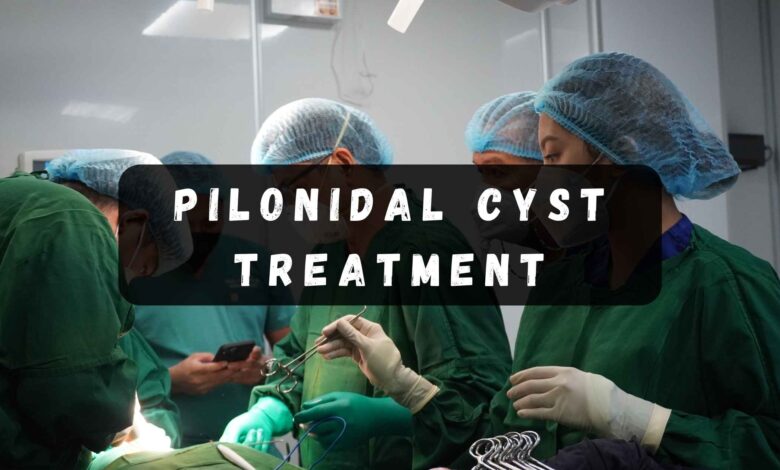Healing Pilonidal Cysts: Exploring Your Treatment Choices

“Pilonidal cysts are very common. People in their young age are most likely to experience the cyst growth at the end of the tailbone. Pilonidal cyst treatment options are limited with non-surgical and surgical remedies.”
Dr Allen Kamrava MD MBA is the best when it comes to treating pilonidal cysts. He recommends a treatment option based on the characteristics of the case.
Complete recovery from a pilonidal cyst can be a cumbersome task. The pilonidal cyst treatment process is long as healing takes time. To enjoy effective results, the treatment strategy must be correct and effectively implemented.
Pilonidal Cyst And Symptoms
A pilonidal cyst grows at the end of the tailbone. The area between the floods of the buttocks is the prime spot. The condition triggers when the hair root fails to puncture the skin and gets trapped inside the hair follicle. Swelling and pain are the early symptoms. If the growth is not handled at this point, infection may set in. Pus accumulation makes the condition more painful and challenging.
A colorectal surgeon is the best person to offer treatment for pilonidal cyst. The diagnosis is made after careful physical examination of the area and evaluation of the symptoms. The points like size of cyst, frequency of occurrence, and quantum of spread are ascertained to figure out the exact course of action.
Treatment Pilonidal Cyst

The pilonidal cyst treatments are both conservative and aggressive. The non-invasive and remedial action to settle symptoms forms the conservative approach. This is most suitable for new growths and small-sized cysts. The symptoms are mild to moderate and a targeted treatment approach with help of antibiotics can offer relief.
On the other hand, the aggressive approach to treat pilonidal cyst or the surgical excision of the cyst is for more complex, painful and chronic cysts.
Understanding Treatment Options
It is important to treat a pilonidal cyst at the earliest. Ignoring the condition or delaying treatment will only make it grow from bad to worse.
1. Treatment At Home
Treatment of pilonidal cyst at home starts with few home remedies. Patients often feel that the pilonidal cyst will self heal. So the professional and medical help is often delayed.
But home remedies like warm compress, Sitz Bath and use of skin ointments to dry the area do provide relief from painful symptoms. Unfortunately, in most cases the pain and other challenging symptoms resurface again.
2. Non-Surgical Options
After trying home remedies with no or little relief, the doctor will assess the area to gauge the area of impact. In case the symptoms are mild and the pilonidal cyst is still in its early stages of development, incision and drainage will be advised. Use of antibiotics is extremely important to take control over the spreading infection.
To cut open the cyst with a small incision and drain it completely is the most used strategy. Use of anesthesia, local or general, is case specific and depends on the severity of symptoms and complexity of case.
3. Surgical Options
To get a perfect treatment and to find long term relief from pilonidal cyst it is important to understand the case properly. If the spread of the infection is wide and deep enough to get till the sinus tract, surgical excision is the only treatment option to get desired results.
The excision of pilonidal cyst is effective in chronic cases. It is also recommended if the size of the cyst is big and infection is widespread. The sinus tract infection is checked and how many hair follicles are involved is assessed.
The surgical procedure will remove the entire infected area but the scope of surgery varies. In a wide local excision, the skin tissue in and around the cyst is removed. The cut is not stitched together. Instead the wound is left open to heal from the inside out. It is packed with a sterilized gauze and proper wound care becomes important to cut the risk of any infection. The recovery is slow and the risk of relapse is also low.
For a little more complex cysts, the surgeon will seal the wound cavity with stitches. Proper wound care is required for excision with marsupialization. The doctor will advise measures to take to avoid infection growth inside the wound cavity. Regular change of dressing, wound care and good lifestyle habits will ensure complete recovery within 6 weeks.
There is yet another treatment approach to treat stubborn and very complex cysts. The rhomboid flap technique ensures that the wound cavity is not left hollow. It is packed with healthy skin grafted from another part of the body. The wound is sealed with stitches. The chances of getting the desired treatment outcome is the highest in this method. The surgery is very complex involving healing at multiple sites from where the skin is grafted. Care of sutures, and wounds is crucial. Also, it requires careful management of the sutures to prevent them from breaking open due to pressure at site. Though permanent relief is in sight, the healing phase is very long and takes up to six months for complete recovery to happen.
Final Words

It is always best to prevent a pilonidal cyst from developing. Hygiene habits and hair removal are extremely important for the same. But for those who are suffering from the condition, Allen Kamrava MD MBA can help find the best treatment strategy to find permanent relief. Book your appointment today to discuss your case with the best colorectal surgeon in Beverly Hills.



